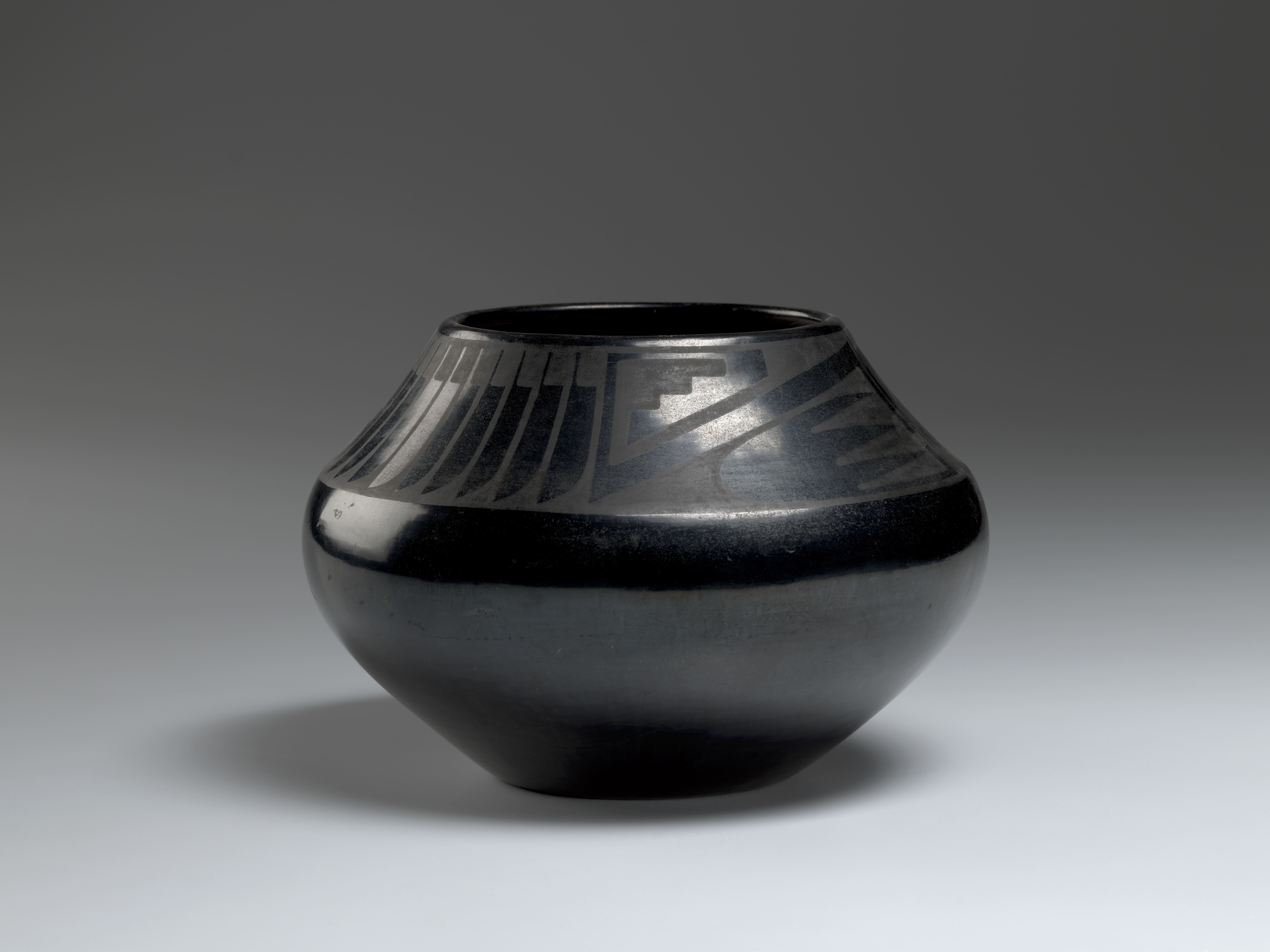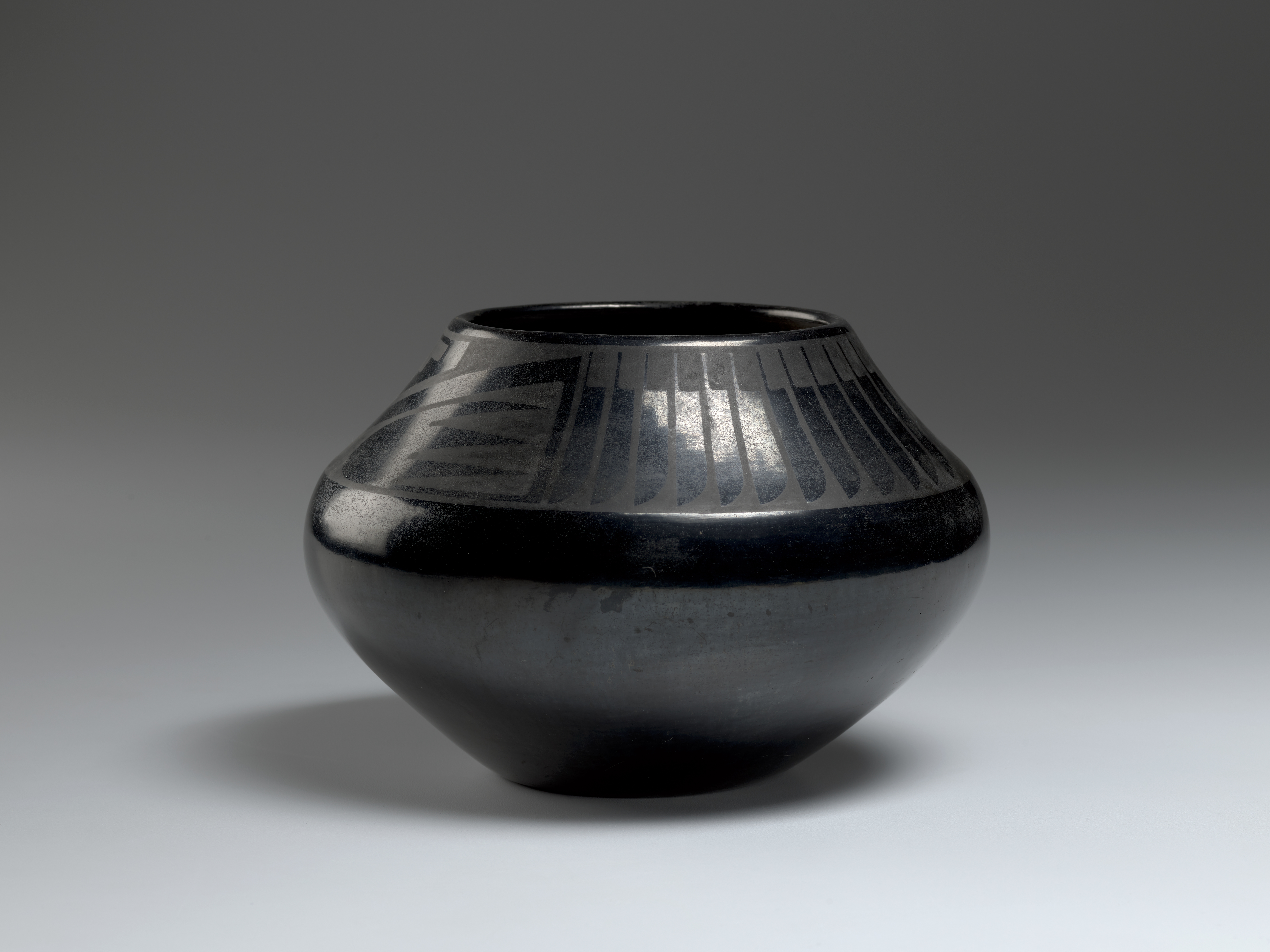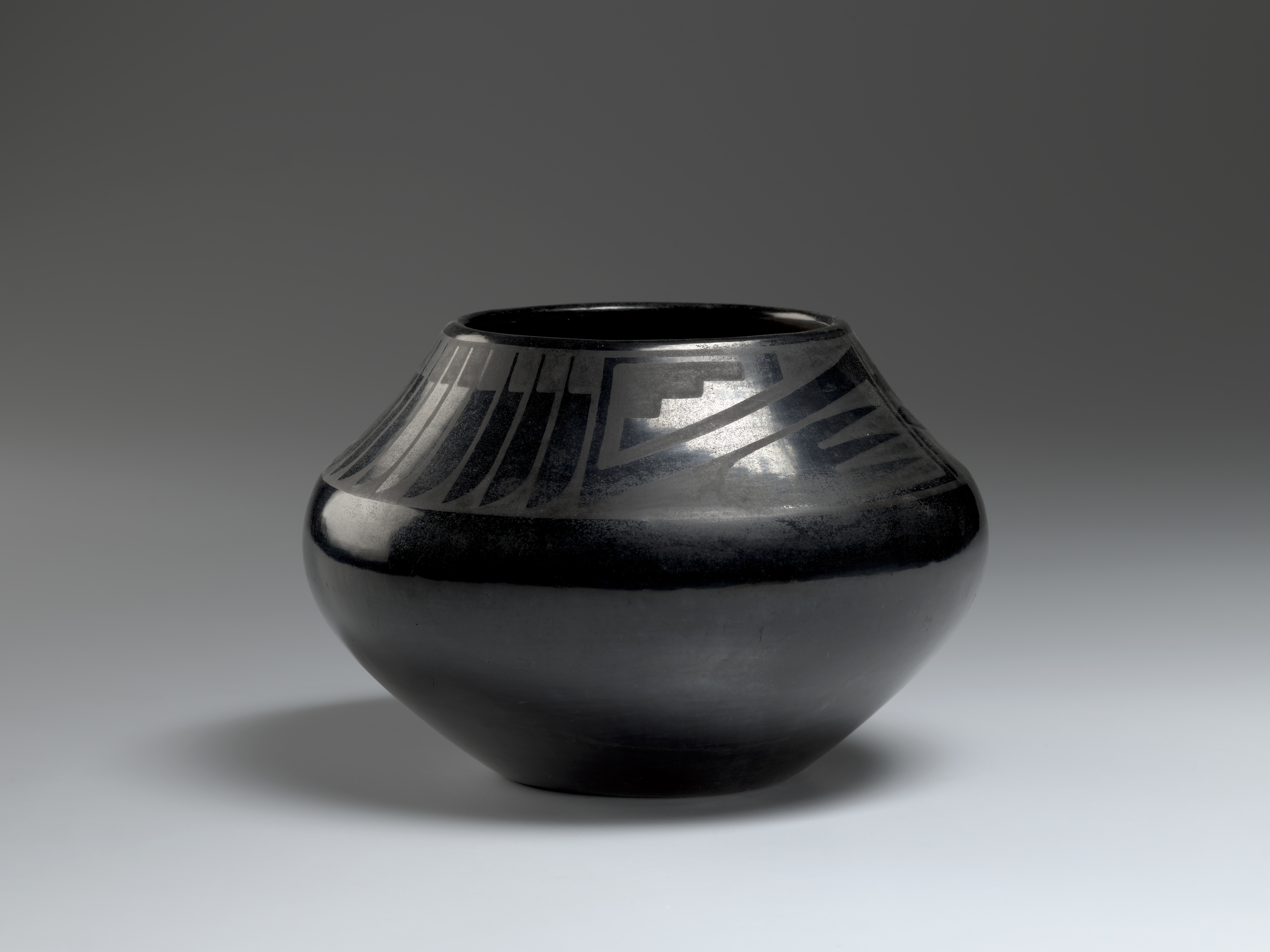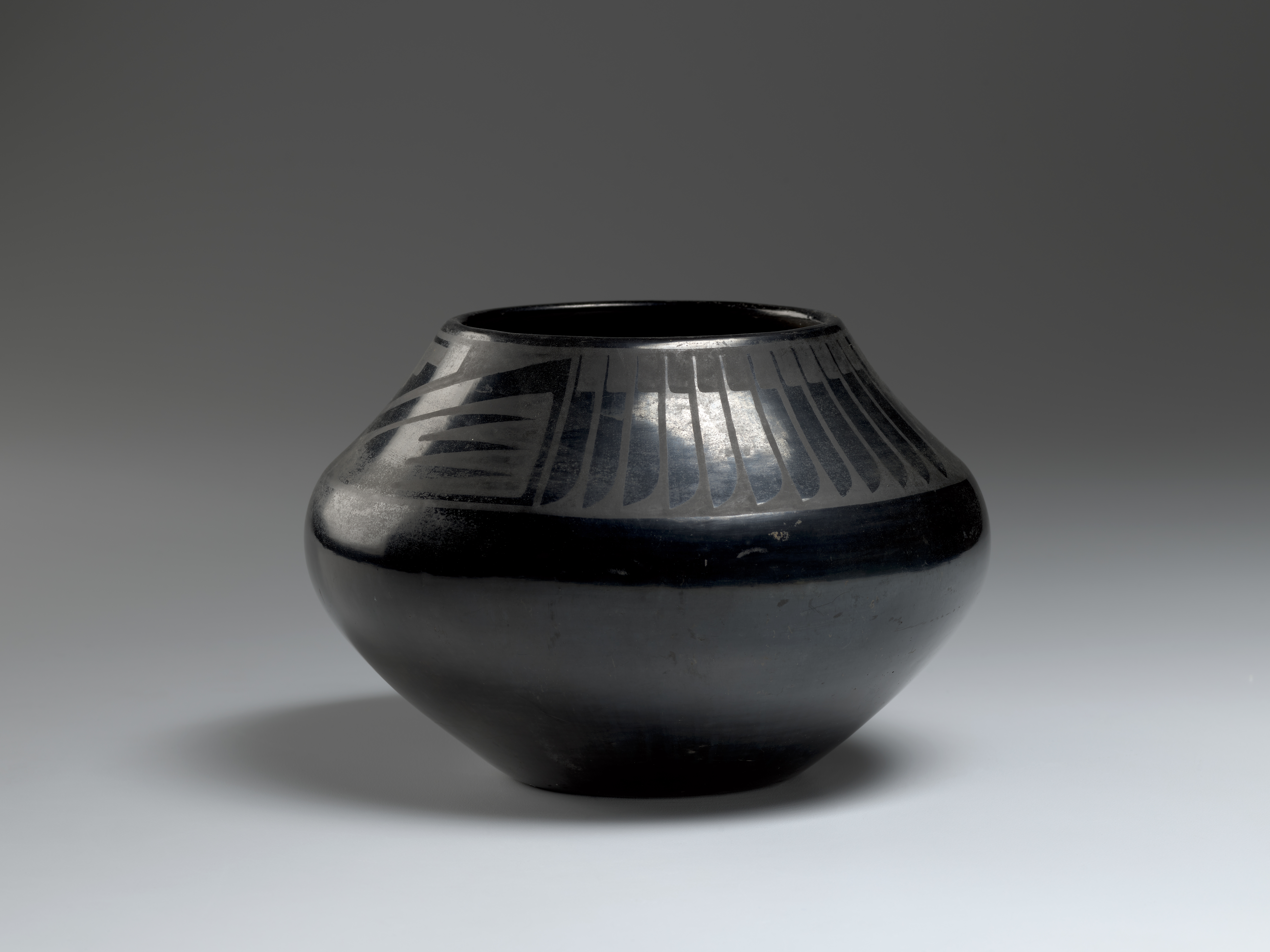Bowl (work of art)
Información sobre la obra de arte
Key Ideas
- This ceramic bowl was made using a black-on-black pottery technique. The designs on the bowl were created using burnished (polished with a hard, smooth surface) and matte (unburnished) surfaces for contrast.
- Maria Martinez was a Tewa potter from the San Ildefonso Pueblo. Tewa potters often taught their younger family members traditional pottery techniques. Martinez taught and worked with many of her relatives during her lifetime.
- Martinez and her husband revived the traditional technique for creating all-black pottery and refined the process to become a fine art form.
Más información
Maria Martinez is best known for innovations in her Tewa blackware pottery tradition. The Tewa are members of the Pueblo peoples of the Rio Grande area who speak the Tewa language. Martinez was from the San Ildefonso Pueblo in New Mexico. There she learned pottery making techniques from her aunt and grandmother. She and her family helped to preserve the cultural art of making blackware pottery.
Blackware is made by smothering the fire during the firing process. The trapped smoke deposits carbon into the clay, which produces a black finish. Designs are then applied to the pottery using selective burnishing. The burnishing process involves rubbing areas of the clay with a hard, smooth stone before it is fired. After the pottery is fired, the burnished areas are shiny. The unburnished areas have a matte finish.
From 1907 to 1909, an archeologist named Dr. Edgar Hewett led an excavation on the Pajarito Plateau (now Bandelier National Monument). Martinez’s husband Julian was one of the local men working at the dig site. Hewett asked Martinez to re-create some of the pottery that was excavated at the site. The pieces she made were included in a museum exhibit, which helped her gain exposure for her artwork.
Martinez and her husband were inspired by the discovery of ancient Pueblo blackware sherds (pottery fragments) at Hewett’s dig site. They wanted to create blackware pottery but did not have access to dark black clay. They tried different pottery making techniques until they found the ideal conditions for creating dark black pottery. Maria shaped and polished the pottery vessels, and Julian painted designs on them. Together they refined the traditional technique for making blackware pottery. They are credited with creating the “non-incised, smooth-surfaced polished-black on matte-black” pottery technique. Their process allowed matte designs to be painted on a stone-polished surface. After it was fired in a kiln, the entire piece of pottery turned black.
Traditional blackware was decorated with incised (carved) designs and was intended for everyday use. Maria and Julian Martinez produced their first black-on-black, non-incised vessels in 1918. By the mid-1920s, their blackware pottery pieces were regarded as works of art rather than household objects.
Recursos adicionales
Recursos para los profesores:
- Watch a documentary about Maria Martinez.
- Read an article about the pottery traditions of the San Ildefonso and Santa Clara Pueblos.
- Read an NCMA Recommends blog post about this work of art.
Recursos para los estudiantes:
- Watch a video to learn more about Maria and Julian Martinez.
- View another work by this artist.
- Read an article about Maria Martinez.




